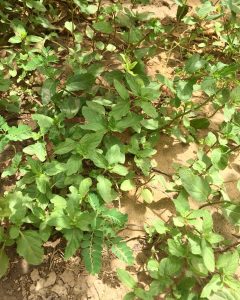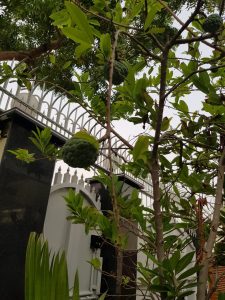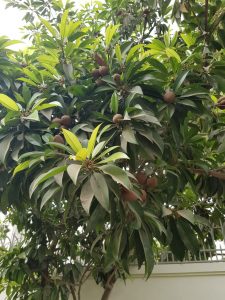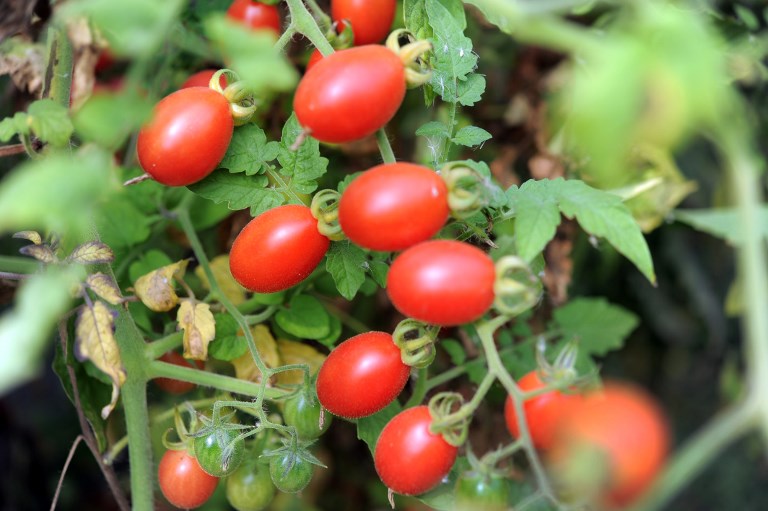KARACHI: Khushal Piracha was 18 and living in the United States when he came across Michael Pollan’s book Omnivore’s Dilemma. It hadn’t been too long since he’d moved there from Pakistan for an undergraduate degree at the University of Texas. But somehow, the book struck a chord with him as it explored the extent to which food is processed in the US.
When he returned to his hometown Karachi, a few months later, he could draw parallels with what he had read in the book to our local market; and not in a good way. “I saw all the markers of heavy use of fertilisers in fruits and vegetables,” shares Piracha, a freelance writer and blogger. “Produce was too large, tasteless and stayed fresh for weeks. It wasn’t normal,” he goes on to add. It was in that moment that he decided to do something about it. “I’ll start small,” he thought; as small as growing his own fruits and vegetables right where he could see them: in his home garden.

The process starts with replenishing the soil, narrates Piracha. “The soil regular grass grows on is quite different so you have to start with buying potting soil from any gardening store.”
Raheela Yasmeen, a housewife from Karachi, also gives her two cents on the process of growing vegetables and fruits at home. “You can embark on this journey by purchasing a couple of empty flowerpots and soil” she says. “These two things are widely available at any nursery,” she further explains. When asked about why she became intrigued with this practice, she mentioned that she was inspired by her brother who maintains his own nursery in Faisalabad.

The next step is to buy seeds as per your requirement and depending on what you wish to grow. “I grow guavas, lemon, mint and bitter gourd,” expresses Piracha. “I was also growing okra but the heat killed the plant.” On the other hand, Yasmeen is currently growing spinach, carrots, mint, coriander, onions, garlic and fruits such as papaya, custard apple and guava.
Although both Piracha and Yasmeen use their home garden for plantation, they also offer advice to those who wish to do the same in their apartments. “A balcony is a great idea. A large wooden box can be used or even separate pots for each vegetable,” says Piracha. “If there’s no balcony, you can always opt to grow herbs like mint, basil, and parsley that can be grown easily on windowsills,” he further adds.

Photo: Piracha
A retired businessman based in Hyderabad, Sarfaraz Ahmed, also shares how he recently took up gardening as a hobby. “It was therapeutic for me, really. It started out as a hobby,” says Ahmed, 70. “But soon after, I also realised the practical advantages of it.” Listing down these advantages, Ahmed points out how homegrown herbs and vegetables are fresh and easily available. “For instance, if we want mint chutney, we don’t have to wait for someone to go all the way to the market and that too to buy sabzi that’s not even coming to us directly from the farm,” he remarks.

The process, as explained by all three enthusiasts, is as follows.
1. Once you’ve acquired all three components required to get you started, pots, soil, and seeds, you start by using your fingers to push holes into the ground separated by about two to three inches.
2. You can then drop two to three seeds in each hole. Then cover the hole with soil and water it liberally.
3. You must ensure your planting area receives ample sunlight and water the plants every day if possible.
4. And voila, you’re done. Now you just have to wait for the vegetables to grow a significant size and change colour.
“Keep in mind your home vegetables will likely be smaller in size than industrial vegetables but their taste will be more intense,” reiterates Piracha.

Is growing vegetables at home a more economical and viable solution?
Speaking on the matter, Ahmed explains how planting vegetables at home is more of a one-time investment but you reap the rewards for quite some time. And this one time investment is almost insignificant, maintains Yasmeen. “The cost of seeds varies from Rs20, Rs40, Rs60 but hardly ever goes over Rs100,” she elucidates. “And after all, the main resource is free: the sun,” says Piracha. Water is another cost but because home gardens are so small, that is also negligible.

Given the current weather situation and recurring heat waves across the country, it is also imperative to assess the extent to which this practice helps the environment. Piracha believes it does. “Growing vegetables gives home to micro-organisms and also benefits the soil and surrounding air,” he says. According to him, one must think about the amount of water used to grow vegetables at one’s house compared to the water, electricity, and machinery used in large-scale farms. There is an obvious difference. “And of course the most important thing is that home gardens are easier to manage and don’t require harmful pesticides to keep the produce healthy.”


 This picture shows home grown organic tomatoes. PHOTO: AFP
This picture shows home grown organic tomatoes. PHOTO: AFP











